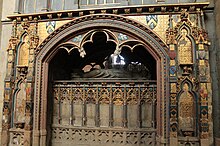
Simon Sudbury was Bishop of London from 1361 to 1375, Archbishop of Canterbury from 1375 until his death, and in the last year of his life Lord Chancellor of England. He met a violent death during the Peasants' Revolt in 1381.

John de Stratford was Archbishop of Canterbury, Bishop of Winchester, Treasurer and Chancellor of England.
William Courtenay was Archbishop of Canterbury (1381–1396), having previously been Bishop of Hereford and Bishop of London.
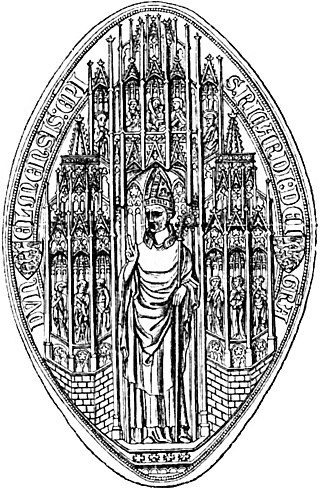
Richard de Bury, also known as Richard Aungerville or Aungervyle, was an English priest, teacher, bishop, writer, and bibliophile. He was a patron of learning and one of the first English collectors of books. He is chiefly remembered for his Philobiblon, written to inculcate in the clergy the pursuit of learning and the love of books. The Philobiblon is considered one of the earliest books to discuss librarianship in-depth.

Antony Bek was a bishop of Durham and the Patriarch of Jerusalem.
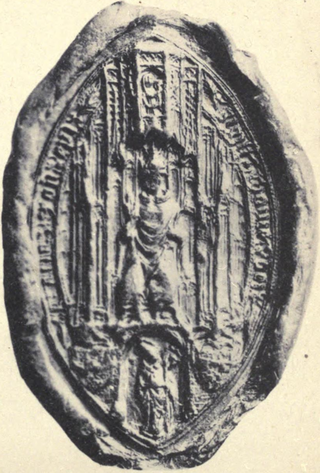
Thomas de Brantingham was an English clergyman who served as Lord Treasurer to Edward III and on two occasions to Richard II, and as bishop of Exeter from 1370 until his death. De Brantingham was a member of the Brantingham family of North East England.
Richard Courtenay was an English prelate and university chancellor, who served as Bishop of Norwich from 1413 to 1415.
John of Thoresby was an English clergyman and politician, who was Bishop of St David's, then Bishop of Worcester and finally Archbishop of York. He was Lord Chancellor of England under King Edward III starting from 1349.
Robert Waldby was a native of York and friar of the Order of Saint Augustine who followed Edward, the Black Prince into Aquitaine, and undertook a number of diplomatic missions on his behalf. After studying at Toulouse, he became professor of theology there. He later became close to Edward's son, King Richard II. He was a firm opponent of John Wycliffe, wrote a book denouncing him, and was a member of the Synod which assembled at Oxford in 1382 to judge his orthodoxy.
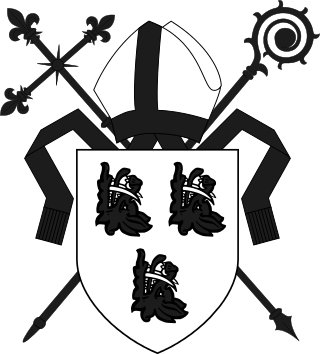
Lawrence Booth served as bishop of Durham and lord chancellor of England, before being appointed archbishop of York.

John Waltham was a priest and high-ranking government official in England in the 14th century. He held a number of ecclesiastical and civic positions during the reigns of King Edward III and Richard II, eventually rising to become Lord High Treasurer, Lord Privy Seal of England and Bishop of Salisbury. He is buried in Westminster Abbey, London.

Durham College was a college of the University of Oxford, founded by the monks of Durham Priory in the late 13th century and endowed by Bishop Thomas Hatfield in 1381.
Thomas Langley was an English prelate who held high ecclesiastical and political offices in the early to mid-15th century. He was Dean of York, Bishop of Durham, twice Lord Chancellor of England to three kings, and a Pseudocardinal. In turn Keeper of the King's signet and Keeper of the Privy Seal before becoming de facto England's first Foreign Secretary. He was the second longest serving Chancellor of the Middle Ages.
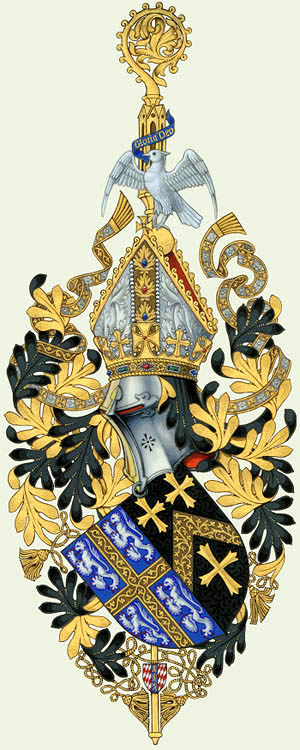
John Fordham was Bishop of Durham and Bishop of Ely. Fordham was keeper of the privy seal of Prince Richard from 1376 to 1377 and Dean of Wells before being named Lord Privy Seal in June 1377. He held that office until December 1381.
Events from the 1340s in England
Adam Orleton was an English churchman and royal administrator.
John Russell was an English Bishop of Rochester and bishop of Lincoln and Lord Chancellor.
Philip Morgan was a Welsh clergyman who served as Bishop of Worcester (1419–1426), then as Bishop of Ely (1426–1435).
Thomas de Lisle (Latinised to Thomas de Insula was a medieval Bishop of Ely.
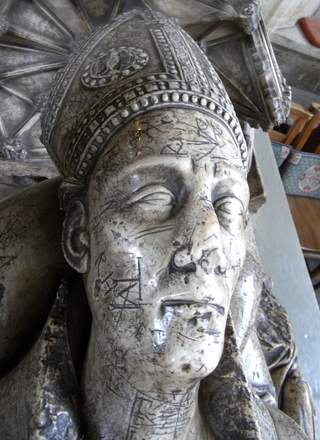
Edmund Stafford was Bishop of Exeter from 1395 to his death in 1419.
